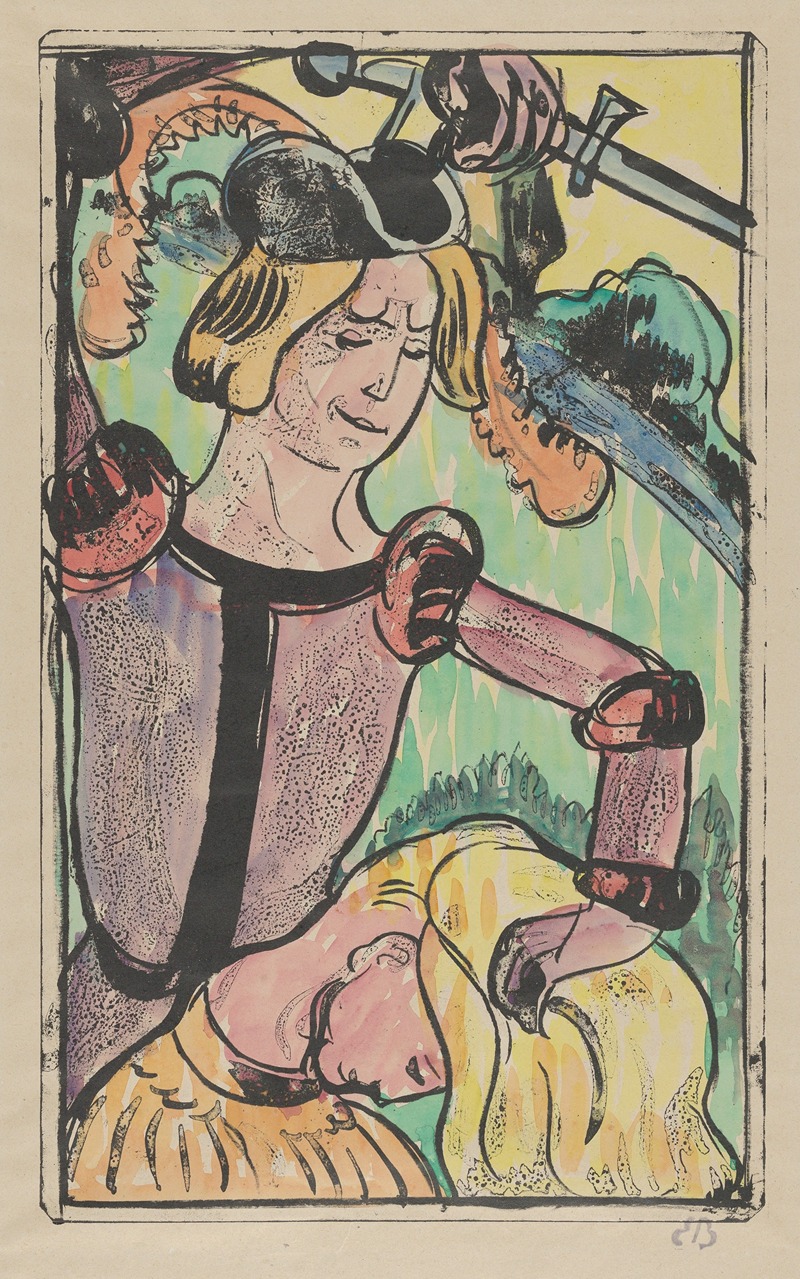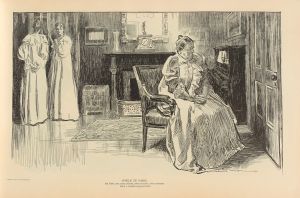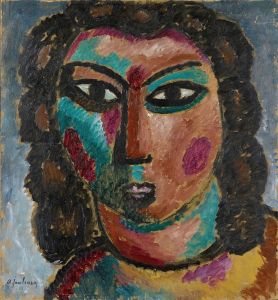
He Takes Her By Her Long Beautiful Hair
A hand-painted replica of Emile Bernard’s masterpiece He Takes Her By Her Long Beautiful Hair, meticulously crafted by professional artists to capture the true essence of the original. Each piece is created with museum-quality canvas and rare mineral pigments, carefully painted by experienced artists with delicate brushstrokes and rich, layered colors to perfectly recreate the texture of the original artwork. Unlike machine-printed reproductions, this hand-painted version brings the painting to life, infused with the artist’s emotions and skill in every stroke. Whether for personal collection or home decoration, it instantly elevates the artistic atmosphere of any space.
"He Takes Her By Her Long Beautiful Hair" is a painting created by the French artist Émile Bernard in 1889. Bernard was a significant figure in the Post-Impressionist movement and is known for his contributions to Symbolism and Cloisonnism, a style characterized by bold outlines and flat areas of color.
The painting depicts a dramatic and somewhat unsettling scene where a man is seen grasping a woman by her long hair. The figures are rendered in a stylized manner, with the woman's flowing hair and the man's firm grip creating a sense of tension and movement. The background is relatively simple, allowing the viewer to focus on the interaction between the two figures.
Émile Bernard was born on April 28, 1868, in Lille, France. He was a contemporary of other notable artists such as Vincent van Gogh, Paul Gauguin, and Henri de Toulouse-Lautrec. Bernard's early work was influenced by Impressionism, but he soon developed his own distinctive style. He was instrumental in the development of Cloisonnism, a technique that involves the use of bold, dark outlines to separate areas of bright, flat color, reminiscent of stained glass windows.
Bernard's relationship with Gauguin was particularly influential. The two artists exchanged ideas and collaborated on several projects, and their work during this period is often seen as a precursor to the Symbolist movement. Bernard's use of simplified forms and symbolic content can be seen in "He Takes Her By Her Long Beautiful Hair," which reflects his interest in exploring deeper emotional and psychological themes.
The painting is notable for its use of color and composition. Bernard employs a limited palette, with the woman's hair and the man's clothing providing the primary sources of color contrast. The use of bold outlines and flat areas of color is characteristic of Cloisonnism and helps to create a sense of immediacy and intensity in the scene.
"He Takes Her By Her Long Beautiful Hair" is part of Bernard's broader exploration of human relationships and emotions. The painting's ambiguous narrative invites viewers to interpret the scene in various ways, reflecting Bernard's interest in symbolism and the subjective nature of human experience.
Throughout his career, Émile Bernard continued to experiment with different styles and techniques. He traveled extensively, spending time in Egypt and Italy, and his work evolved to incorporate elements of these diverse cultural influences. Despite his contributions to the Post-Impressionist movement, Bernard's work was often overshadowed by that of his more famous contemporaries. However, his innovative approach to color and form has earned him a lasting place in the history of modern art.
"He Takes Her By Her Long Beautiful Hair" remains an important example of Bernard's work and is representative of his contributions to the development of modern art. The painting is held in various collections and continues to be studied and appreciated for its artistic and historical significance.


















